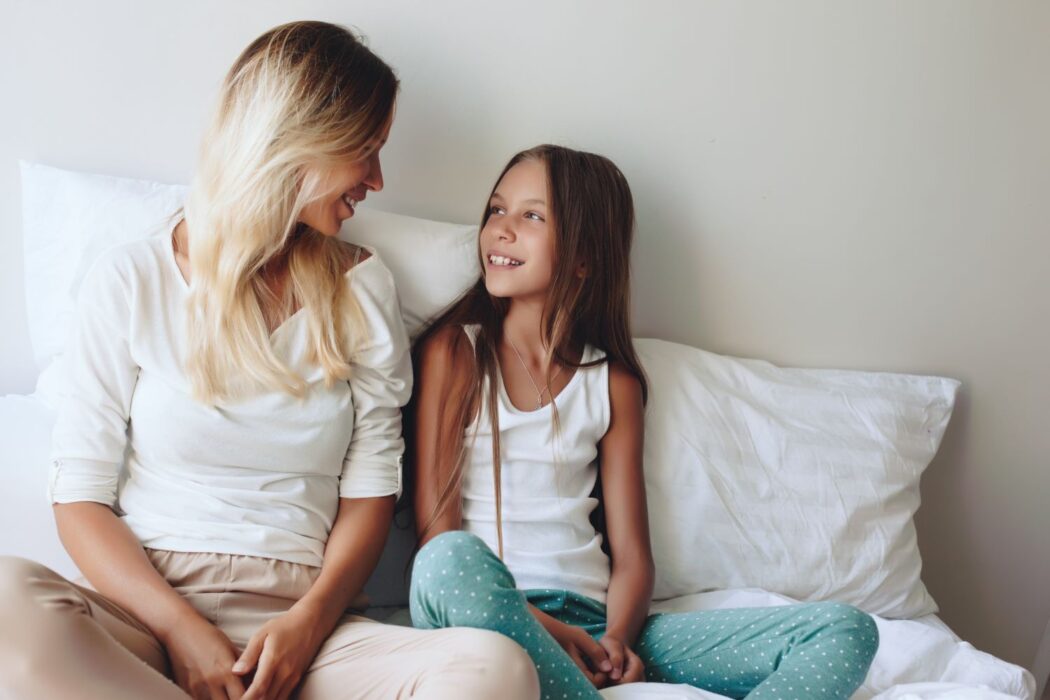TikTok: the parental controls you should know about
Here we discuss the parental controls available to help you keep your teenager out of harm’s way when it comes to TikTok and healthy digital boundaries.
TikTok is the latest social media platform to become embedded in the fabric of many teens’ lives. The company states that it believes it should bring joy and play a positive role in how people express themselves, discover ideas and connect. There is much debate around the dangers of TikTok, especially for younger users, but also around the opportunity it provides to discover new things. Whatever your personal parenting preferences are, it’s wise to be vigilant about your child’s use of this social media, guiding your teen towards forming healthy digital boundaries.

THE POWER OF THE ALGORITHM
It’s good to remember that TikTok’s algorithm is designed to keep everyone coming back for more, feeding users a stream of content aimed at their specific personality. This is done by using each person’s usage data to detect their sense of humour, frame of mind, music taste and lots of other data. This means the content has a powerful effect on our psyche as it is tailored to our individual wants, meaning it can be particularly difficult to resist looking at.
DOPAMINE AND TIKTOK USE
The platform also causes dopamine release, a chemical associated with the “reward centre” of the brain. Your child receives dopamine when they come across a video they enjoy, as brains are designed to enjoy random “wins”. Because TikTok’s algorithm provides a variety of videos throughout the day, your child’s mind still perceives discovering a great video as an uncertain outcome. This unpredictability causes more activity in reward regions of the brain, encouraging the production of dopamine and potentially making it harder to refrain from using the app.
Once the brain adapts to this unpredictable reward system, it may begin to preempt this reward, generating dopamine just from exposure. In short, your teen can start to associate using TikTok itself with a feeling of reward, producing dopamine simply by being on the app. This positive feedback loop influences habits and is not something you should expect them to be able to regulate on their own. This is where parental guidance comes in.

INVOLVE YOURSELF
Overseeing your child’s digital life and wellbeing online can be intimidating, and many parents may feel as though they’re always a step behind their teen when it comes to the apps they spend time on. Every family is different. You may only feel the need to explicitly monitor your child’s app activity when TikTok is initially downloaded; or perhaps you prefer to stay involved for longer, potentially even taking advantage of Family Pairing – a system where your child’s account is linked to your phone.
Whatever you decide works best for your family, keep in mind the importance of initiating regular communication and discussion with your child about their digital safety and app use. Don’t be afraid to read up and educate yourself about this social media in order to feel more confident about these conversations. They are a very important cornerstone in ensuring your child remains safe and avoids unhealthy digital habits.
SAFETY SETTINGS
To help parents with this job, TikTok has announced improvements to their controls, with more custom screen time options, new default settings for teen accounts and an expansion to their Family Pairing concept that allows for more parental controls. Young people, especially impressionable teens, can’t be expected to self-manage their use of such a powerful platform alone – it’s hard enough as an adult!

LIMITING SCREEN TIME
Every TikTok account belonging to a minor will now automatically be set to a daily 60 minute screen time limit. This new change is a default setting that can be switched off by your child, so it’s still important to speak with them about setting in-app limits to make sure that they are sticking to this, or another limit that you have agreed together. In the default version, once the hour is reached, teens will be prompted to enter a passcode in order to continue watching, requiring them to make an active decision to extend their time.
Building awareness
Research suggests that being more aware of how we spend our time can help us be more intentional about the decisions we make. With this in mind, TikTok is prompting teens to set some kind of screen time limit if they both opt out of the 60-minute default and also spend more than 100 minutes on TikTok a day.
This builds on a prompt that TikTok rolled out last year encouraging teens to enable screen time management. Tests indicated that this approach helped increase the use of their screen time tools by 234%. However, it’s best not to leave these matters up to your child’s discretion, so do make sure to have an ongoing conversation about the importance of keeping to a time limit approved by you.
The health effects
While there’s no officially endorsed position on how much screen time is too much, there are plenty of studies that suggest the negative impact of screen time more broadly, including lower levels of physical activity, poor sleep patterns, lowered attention span and cognitive skills, decreased social skills and worsened emotional well-being.
Therefore, when deciding how long teens should be permitted to spend before their time is up, TikTok consulted the current academic research and experts from the Digital Wellness Lab at Boston Children’s Hospital. Once again, you do not have to base your parenting choices off of this – if you feel happier setting a shorter time limit for your child, be confident in doing so.
Controls for everyone
In addition to bringing these new features to families, everyone will soon be able to set their own customised screen time limits for each day of the week and set a schedule to mute notifications. TikTok is also rolling out a sleep reminder to help people more easily plan when they want to be offline at night. You can set a time, and when it’s reached, a pop-up will remind you to log off.
FAMILY PAIRING
When teens need support, parents or caregivers are often the first people they can turn to, making you one of the most important partners for TikTok. It’s worth being aware of Family Pairing, a set up that allows parents to link their own TikTok account with their teen’s, so you can have a greater influence and a better grasp over your child’s use of TikTok – all while controlling their content and privacy settings remotely. It’s worth noting that children can’t change these settings without consent from their parent’s account.
The platform has introduced this concept to empower parents to be as involved and as aware as they can be around their teen’s presence and experience on this app. Family Pairing offers families a digital toolbox to tackle the tricky issue of child wellbeing on this social media, giving parents the opportunity to have a robust method of creating the TikTok experience that’s right for your teen, as each family is different and has their own needs and norms. Let’s take a closer look.

Nuanced daily limits
This new concept allows you to use Family Pairing to customise the daily screen time limit for your teen. This includes choosing different time limits depending on the day of the week, giving your family more options to match screen time to school schedules, holiday breaks or family travel.
Screen time dashboard
The new screen time dashboard provides you with summaries of the time your teen has spent on the app, the number of times TikTok was opened and a breakdown of the total time your child has spent during the day and the night.
Muting notifications
A new setting now enables parents to set a schedule to mute notifications for their teen. Accounts aged 13-15 already do not receive push notifications from 9pm onwards and accounts aged 16-17 have push notifications disabled from 10pm. However, this new change gives you greater control as a parent to stop your child receiving notifications from a time of your choosing, that works best for your parental approach.
Restricted mode
Restricted mode is an option that enables parents to limit content that may not be appropriate for all audiences from appearing on their child’s ‘For You’ feed. It may also be used for anyone who wants to filter out certain types of content on the app. A passcode is needed to switch it on and off, so you can rest assured that only you have the power to disable this filter.
Content moderation and interaction
Additionally, this new update to Family Pairing means that you can now decide whether your teen can access the search bar on TikTok, where kids can otherwise look for content, other users, hashtags and sounds. Obviously, this particular tweak impacts your teen’s ability to discover other accounts and trends, so this one could be met with some protests!
You may also select whether other users can view the videos your child has liked on their profile, as well as who can comment on their videos – either everyone, their friends or no one – it’s up to you.
Other considerations
Some of the other safety measures to consider as a parent is whether you are comfortable allowing direct messaging (it’s already inaccessible for those aged under 16) and whether you want your child’s account set to private or public.
These safety features aim to help families establish a protocol and an ongoing dialogue about safety and wellbeing for teens while using TikTok.
The teenage years can sometimes be tough to manage as a parent. This is a time when your child wants to explore the world around them and start to discover who they are and what their identity is as an independent person, both online and offline. While this is important for their development, it’s vital to keep safety and health at the forefront of your parenting approach.
Teens have strong emotions that often bring out strong opinions, but it doesn’t mean they are old enough to know what is best for their wellbeing. Communication is key when it comes to the digital world and TikTok use is no different. Using these tools and tips, you should be better able to have conversations and make decisions that are right for you and your family.











Comments